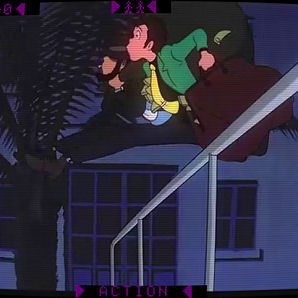 Stern Electronics releases the arcade laserdisc video game Cliff Hanger in the United States, utilizing footage culled from Hayao Miyazake’s anime Castle Of Cagliostro.
Stern Electronics releases the arcade laserdisc video game Cliff Hanger in the United States, utilizing footage culled from Hayao Miyazake’s anime Castle Of Cagliostro. ![]()

 Stern Electronics releases the arcade laserdisc video game Cliff Hanger in the United States, utilizing footage culled from Hayao Miyazake’s anime Castle Of Cagliostro.
Stern Electronics releases the arcade laserdisc video game Cliff Hanger in the United States, utilizing footage culled from Hayao Miyazake’s anime Castle Of Cagliostro. ![]()
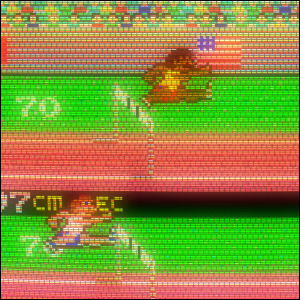 Konami introduces the arcade game Track & Field in the United States, a multi-event game built around a summer Olympic theme. Due to the nature of the game’s control scheme, the Track & Field coin-ops take a huge amount of abuse as players pound the action buttons to determine the “intensity” of their on-screen athletes’ movement.
Konami introduces the arcade game Track & Field in the United States, a multi-event game built around a summer Olympic theme. Due to the nature of the game’s control scheme, the Track & Field coin-ops take a huge amount of abuse as players pound the action buttons to determine the “intensity” of their on-screen athletes’ movement. ![]()
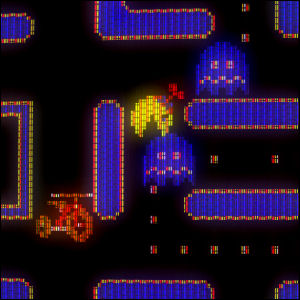 Midway releases the arcade video game Jr. Pac-Man, a new Pac-Man sequel which introduces a scrolling element with mazes that are bigger than the screen.
Midway releases the arcade video game Jr. Pac-Man, a new Pac-Man sequel which introduces a scrolling element with mazes that are bigger than the screen. ![]()
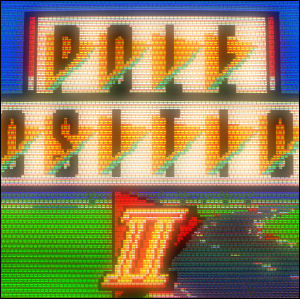 Atari’s arcade game Pole Position II, originated by Japanese manufacturer Namco, is released in the United States. A sequel to the hit racing game Pole Position, this game adds new tracks and improved graphics.
Atari’s arcade game Pole Position II, originated by Japanese manufacturer Namco, is released in the United States. A sequel to the hit racing game Pole Position, this game adds new tracks and improved graphics. ![]()
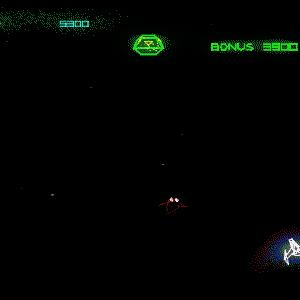 Atari releases the arcade video game Major Havoc, featuring multiple stages drawn in colorful vector graphics.
Atari releases the arcade video game Major Havoc, featuring multiple stages drawn in colorful vector graphics. ![]()
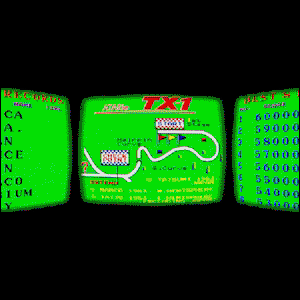 Atari releases the arcade video game TX-1, licensed from Namco (which itself licensed the game from another Japanese manufacturer). This game is available only in a massive “cockpit” big enough to accommodate three CRT screens.
Atari releases the arcade video game TX-1, licensed from Namco (which itself licensed the game from another Japanese manufacturer). This game is available only in a massive “cockpit” big enough to accommodate three CRT screens. ![]()
 Mixing video highway hypnosis and a strangely hummable theme song, Japanese video game Tube Panic, from the makers of Crazy Climber and Moon Cresta, first appears in American arcades. Players have to fight motion sickness to keep blasting away at bad guys. The game achieves minor cult status but fails to become a smash hit at a time when arcade manufacturers desperately need one.
Mixing video highway hypnosis and a strangely hummable theme song, Japanese video game Tube Panic, from the makers of Crazy Climber and Moon Cresta, first appears in American arcades. Players have to fight motion sickness to keep blasting away at bad guys. The game achieves minor cult status but fails to become a smash hit at a time when arcade manufacturers desperately need one. ![]()
 Konami introduces the arcade game Time Pilot ’84 in the United States, dragging the popular Time Pilot style of game play two years into the future. (In many respects, it’s the same game with a new graphics set.)
Konami introduces the arcade game Time Pilot ’84 in the United States, dragging the popular Time Pilot style of game play two years into the future. (In many respects, it’s the same game with a new graphics set.) ![]()
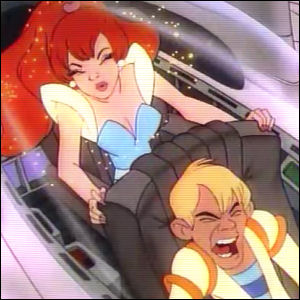 Cinematronics releases the laserdisc-powered arcade video game Space Ace, with animation overseen by ex-Disney animator Don Bluth.
Cinematronics releases the laserdisc-powered arcade video game Space Ace, with animation overseen by ex-Disney animator Don Bluth. ![]()
 The American wing of Japanese arcade game manufacturer Taito introduces the coin-op racing game Buggy Challenge on the American arcade market.
The American wing of Japanese arcade game manufacturer Taito introduces the coin-op racing game Buggy Challenge on the American arcade market. ![]()
 Capcom releases the arcade video game Vulgus, a fast-paced coin-op shoot-’em-up.
Capcom releases the arcade video game Vulgus, a fast-paced coin-op shoot-’em-up. ![]()
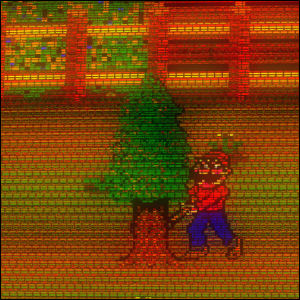 Midway releases the arcade video game Timber.
Midway releases the arcade video game Timber. ![]()
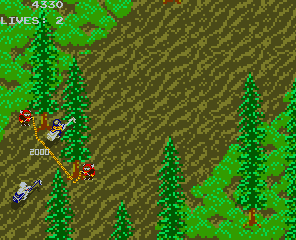 Atari releases the arcade game Return Of The Jedi in the United States, completing its own coin-op Star Wars trilogy and allowing players to participate in the thrill of helping Ewoks snag Imperial speeder bikes out of mid-air.
Atari releases the arcade game Return Of The Jedi in the United States, completing its own coin-op Star Wars trilogy and allowing players to participate in the thrill of helping Ewoks snag Imperial speeder bikes out of mid-air. ![]()
 Midway releases the arcade video game Pac-Land, a game placing Pac-Man in a side-scrolling 2-D world similar to that of Super Mario Bros.
Midway releases the arcade video game Pac-Land, a game placing Pac-Man in a side-scrolling 2-D world similar to that of Super Mario Bros. ![]()
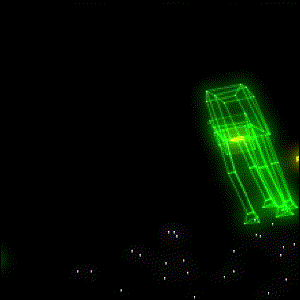 Atari releases the arcade video game The Empire Strikes Back, based on the movie of the same name; this is a conversion kit allowing arcade operators to freshen aging Star Wars coin-ops with new levels and game elements.
Atari releases the arcade video game The Empire Strikes Back, based on the movie of the same name; this is a conversion kit allowing arcade operators to freshen aging Star Wars coin-ops with new levels and game elements. ![]()
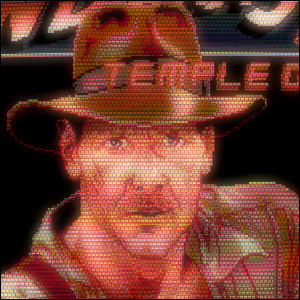 Atari releases the arcade game Indiana Jones and the Temple of Doom in the United States, giving players the chance to hate pixellated snakes from a safe distance.
Atari releases the arcade game Indiana Jones and the Temple of Doom in the United States, giving players the chance to hate pixellated snakes from a safe distance. ![]()
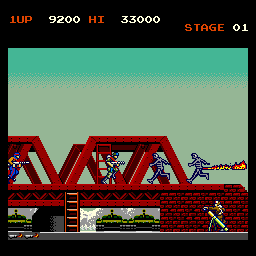 Konami introduces the arcade game Rush’n Attack in the United States, while the same game – with no changes to its hand-to-hand military fighting action – is released elsewhere as Green Beret.
Konami introduces the arcade game Rush’n Attack in the United States, while the same game – with no changes to its hand-to-hand military fighting action – is released elsewhere as Green Beret. ![]()
 Atari Games releases the arcade video game Pac-Mania, licensed from Namco, the Japanese developers behind Pac-Man, of which this game is an isometric 3-D remake.
Atari Games releases the arcade video game Pac-Mania, licensed from Namco, the Japanese developers behind Pac-Man, of which this game is an isometric 3-D remake. ![]()
 Programmer Nicola Salmoria releases the earliest version of the Multiple Arcade Machine Emulator, or MAME, a freeware PC program which allows users to obtain dumps of the original 1970s and 1980s arcade game ROM chips which MAME interprets, emulating the original hardware architecture to allow play of those games with remarkable fidelity to the original graphics and sounds. This kick-starts a golden age of computer emulation of classic video games and game systems, with the average desktop computer now sporting enough memory to allow for accurate emulation. The release of MAME also ignites an ongoing controversy about the legality of downloading games whose original manufacturers are no longer exploting their intellectual property (or, in some cases, no longer exist as corporate entities).
Programmer Nicola Salmoria releases the earliest version of the Multiple Arcade Machine Emulator, or MAME, a freeware PC program which allows users to obtain dumps of the original 1970s and 1980s arcade game ROM chips which MAME interprets, emulating the original hardware architecture to allow play of those games with remarkable fidelity to the original graphics and sounds. This kick-starts a golden age of computer emulation of classic video games and game systems, with the average desktop computer now sporting enough memory to allow for accurate emulation. The release of MAME also ignites an ongoing controversy about the legality of downloading games whose original manufacturers are no longer exploting their intellectual property (or, in some cases, no longer exist as corporate entities).
 Santa Monica Press publishes Warren Davis’ career memoir, “Creating Q*Bert and Other Classic Video Arcade Games“. Davis recalls his work on such ’80s and ’90s arcade games as Q*Bert, Exterminator, Terminator 2, and Revolution X, as well as numerous games and game concepts that never saw the light of day.
Santa Monica Press publishes Warren Davis’ career memoir, “Creating Q*Bert and Other Classic Video Arcade Games“. Davis recalls his work on such ’80s and ’90s arcade games as Q*Bert, Exterminator, Terminator 2, and Revolution X, as well as numerous games and game concepts that never saw the light of day. ![]()